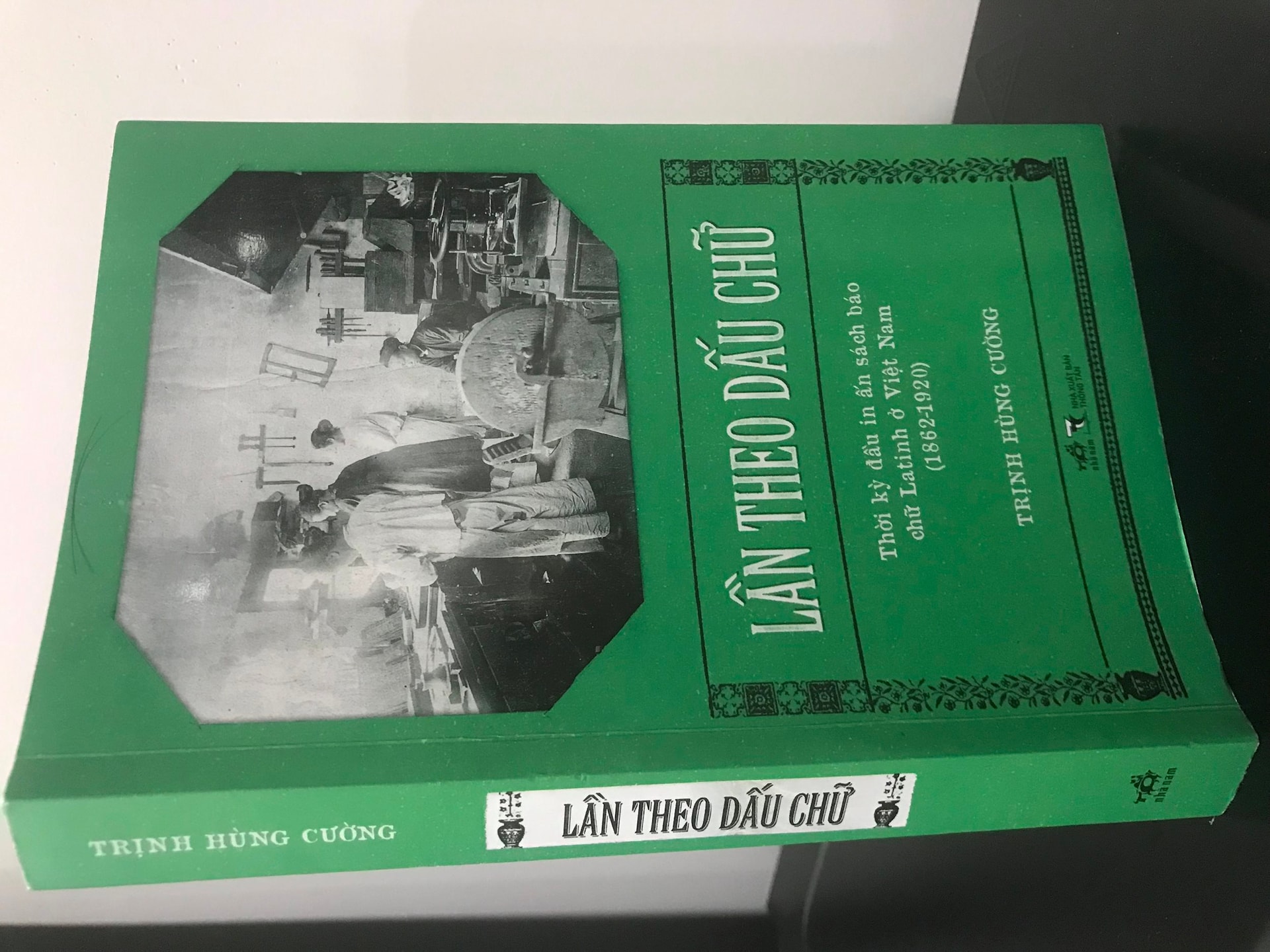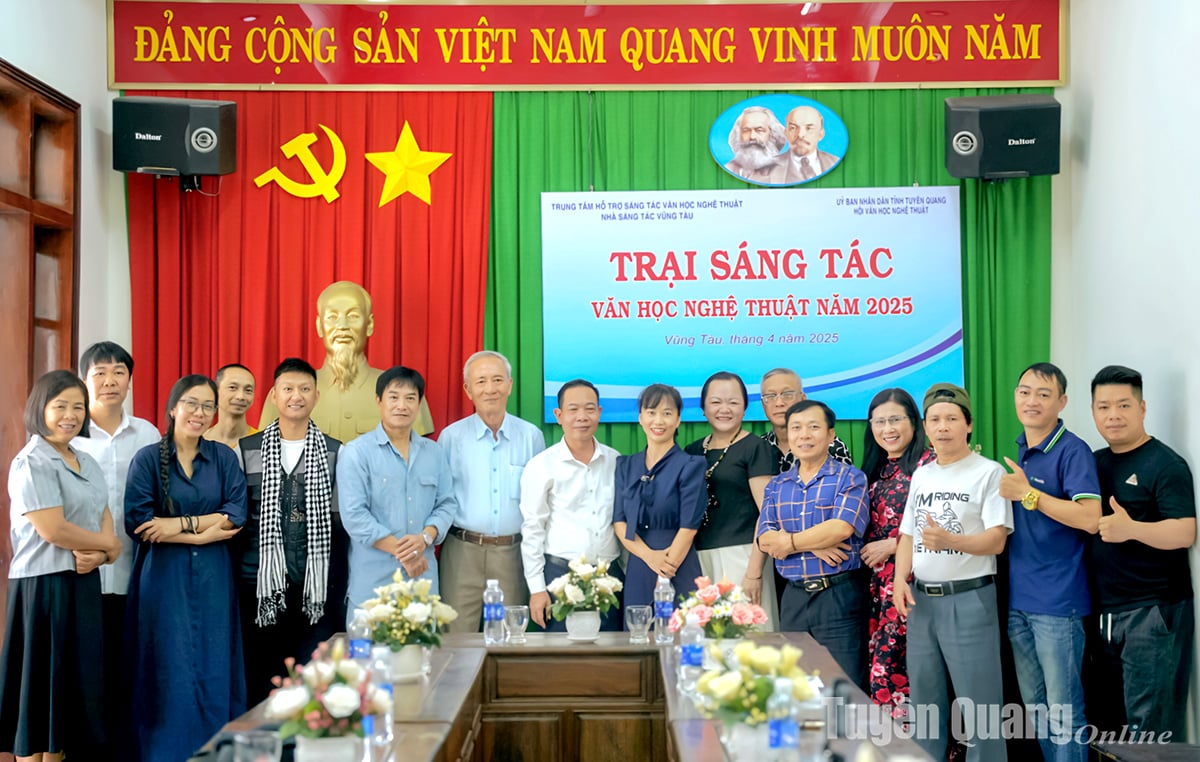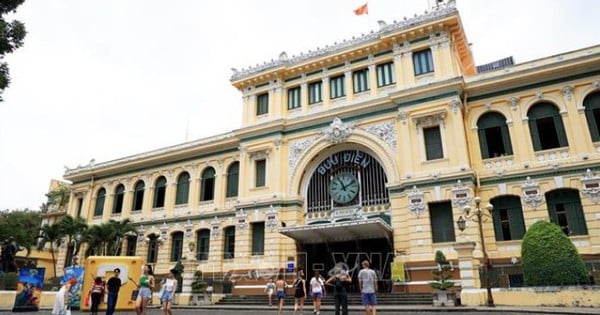
Hundred years of tracking
In the work Following the Letters, author Trinh Hung Cuong believes that the early history of Vietnamese printing dates back to when France began colonial exploitation in our country.
According to history, in 1862, Dai Nam was still under the rule of the Nguyen Dynasty, under the reign of King Tu Duc. After a series of military victories, the French colonialists occupied many provinces of Nam Ky, forcing the Nguyen Dynasty to make peace.
On the French warship Duperré docked at Saigon port, chief envoy Phan Thanh Gian signed a peace treaty with representatives of France and Spain. Later, this peace treaty was known in history as the Nham Tuat Peace Treaty.
Author Trinh Hung Cuong provided information that, at the end of 1861, France established the first printing factory in our country: Imprimerie Impériale (Royal Printing House), which printed the Bulletin Officiel de l'Expédition de Cochinchine, the first French-language newspaper in Cochinchina.
Trinh Hung Cuong commented: "The history of Vietnam's printing industry is closely linked to France's colonial expansion ambitions in Indochina."
Indeed, in the past, the propaganda machine was never separated from printing. These early French-language books and newspapers became one of the effective tools of the colonial government.
Along with that, the Latin script was also popularized, when the use of the script was more emphasized. A few years after the first printing house was built in Cochinchina, the first newspaper in the script - Gia Dinh Bao was published.
In 1868, the first private printing house was established in Saigon, founded by a Portuguese businessman. New policies of the French government encouraged the establishment of a series of private printing houses.
Along with the development of the press was the birth of large bookstores, mainly concentrated on Catinat Street, now Dong Khoi Street, in the center of District 1, Ho Chi Minh City. Currently, this is still the busiest street and has the most expensive rent in the city. The fact that printing and publishing establishments were concentrated on this street during the French colonial period also shows the development and prosperous business ability of printing houses in Saigon.
This also proves that, escaping from its original purpose of serving as a tool of the colonial regime, the printing industry in Vietnam gradually shifted to commercial purposes because merchants saw the potential for profit in this relatively new industry.
A time in the past
What is worth noting in Following the Words is the precious images of books and newspapers, and the prominent printers who played an important role in the history of printing.
A history of printing that, although author Trinh Hung Cuong has described in a concise manner for about half a century, there is still much to learn. The author himself also sees the book as an outline, a reference source for other researchers to have deeper, more massive works.
The author also explained the choice of the time frame 1862-1920. According to the author, if the research period was chosen until 1945, the amount of work, research documents, and publications would not be small. Although the time frame is only until 1920, Following the Letters has a capacity of more than 400 large-format pages.
The author chose to end in 1920 because he believed that “that was the time when the printing and publishing empire of FH Schneider - the last of the old capitalist class - stopped doing business in Indochina, opening a new phase for the Vietnamese printing and publishing industry in the later period (1920-1945)”.
However, the author has managed to give an overview of the history of printing in Cochinchina, Tonkin and Catholic printing. If in Cochinchina, the starting time of printing was 1862, then in Tonkin it was 1885 and Catholic printing was 1867. Besides the role of the French, the book also mentioned the contributions of the Vietnamese in the flow of printing history.
Trinh Hung Cuong's contributions in the appendices have helped readers grasp the list of printing houses and bookstores in Vietnam during the period 1862-1920, printing terminology, as well as a diagram of the relationships between printing houses in Vietnam during this period.
I believe that after reading Following the Letters, when walking along the shelves in a bookstore, or running your fingers over the spines of books in your home library, readers will surely have a different feeling.
As time passes, printing techniques, processes, and terminology may have changed a lot. However, the first foundations of the early days, especially the role of printing in the development of the Vietnamese script as well as its great contribution to the spiritual life of the Vietnamese people, are still valuable today.
Source: https://baoquangnam.vn/lan-theo-dau-vet-nganh-in-an-viet-nam-3152667.html



![[Photo] Touching images recreated at the program "Resources for Victory"](https://vstatic.vietnam.vn/vietnam/resource/IMAGE/2025/4/14/99863147ad274f01a9b208519ebc0dd2)


![[Photo] Children's smiles - hope after the earthquake disaster in Myanmar](https://vstatic.vietnam.vn/vietnam/resource/IMAGE/2025/4/14/9fc59328310d43839c4d369d08421cf3)
![[Photo] Opening of the 44th session of the National Assembly Standing Committee](https://vstatic.vietnam.vn/vietnam/resource/IMAGE/2025/4/14/03a1687d4f584352a4b7aa6aa0f73792)















![[Photo] National Assembly Chairman Tran Thanh Man attends the ceremony to celebrate the 1015th anniversary of King Ly Thai To's coronation](https://vstatic.vietnam.vn/vietnam/resource/IMAGE/2025/4/13/6d642c7b8ab34ccc8c769a9ebc02346b)
































































Comment (0)